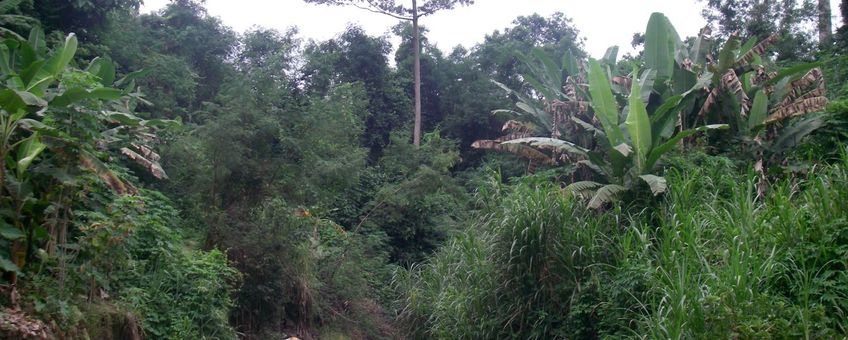
Tropical vegetation benefits less from elevated atmospheric CO2 than previously thought
Institute for Biodiversity and Ecosystem Dynamics (IBED)Tropical vegetation forms an important part of the global carbon cycle as it contributes substantially to the global net primary productivity and through this sequesters large amounts of carbon dioxide from the atmosphere. Previous research on individual plants, or forest patches, suggested that tropical vegetation could be a mitigating factor of anthropogenically elevated atmospheric CO2 levels: i.e. when more CO2 is released into the atmosphere, the vegetation will absorb more CO2 and thereby reduce the impact of this greenhouse gas.
Landscape scale
The newly published study in Science, led by Dr William Gosling from the Institute for Biodiversity and Ecosystem Dynamics at the University of Amsterdam, for the first time scaled up to allow tropical vegetation change at the landscape scale and over timescales relevant to ecosystem change to be considered. The international research team from the Netherlands, United States and United Kingdom combined different lines of evidence. ‘We combined evidence of past environmental change extracted from sediments recovered from Lake Bosumtwi in Ghana, with simulated past climate conditions, and the record of global atmospheric CO2 change obtained from ice cores over the last 500,000 years’, explains Gosling.
The sediments from Lake Bosumtwi revealed information regarding woody cover, fire history, herbivore activity and moisture availability. This information was combined in a model together with temperature and atmospheric CO2 data. Gosling: ‘The model allowed us to identify the relative strength of the relationships between the different factors in driving vegetation change.’
Moisture, fire and herbivory
This new research approach showed that atmospheric CO2 is less important than moisture availability, fire and herbivory in determining woody cover change in tropical forest-savanna transitions. ‘What is new from our data is that when you scale up to the landscape scale, the resources available and processes occurring within that landscape are more important than the CO2 fertilization effect. Simply put, we have shown that it does not matter how much CO2 is in the atmosphere - if there is not enough water, or there are fires every year, or all the seedlings are eaten by animals, you do not grow a forest.’
These research findings have important implications for the global vegetation models and Earth system models that currently include a CO2 fertilization effect on the vegetation, but often do not include factors such as fire or herbivory. Additional research needs to be done to further improve these models.
‘Although we have a dataset that runs over 500,000 years, we only have one study site. It is possible that the relationship between CO2 and vegetation elsewhere in the tropics is different’, Gosling explains. ‘In any case, efforts that promote the sequestration of carbon into tropical vegetation must carefully consider the roles of moisture, fire and herbivory if they are to be successful.’
The publication can be read here.
Text: IBED
Photo: William Gosling
